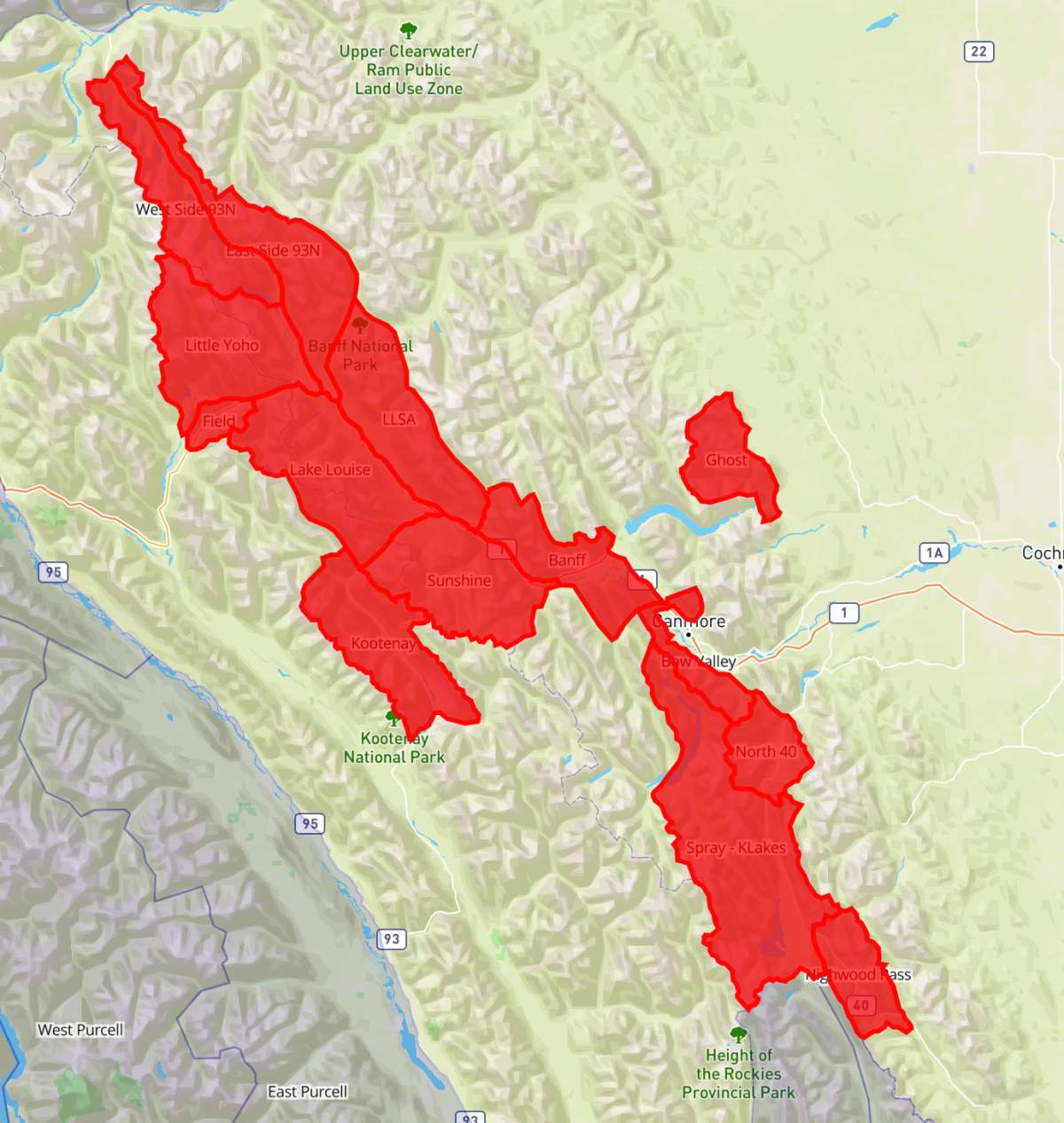Avalanche conditions continue to be ripe in areas west of Calgary.

A special public avalanche warning originally issued on Feb. 29 affecting parts of Banff, Kootenay and Yoho National parks and Kananaskis Country has been extended through March 10.
“A variety of weak layers, established in early February, are now buried anywhere from 40 to 100 cm deep in these regions. After recent storms, the forecast is for clear skies and warmer temperatures in the Rocky Mountains,” Avalanche Canada wrote. “This combination of factors has the potential for challenging avalanche conditions.”
Areas around Canmore, Banff, Lake Louise, Field, B.C., and up Highway 93 were all in the warning area.
The “persistent weak layers” remain easy to trigger and authorities warn conditions mean a triggered avalanche could be large enough to injure or even kill a person.
Avalanche Canada stressed the importance for careful and cautious decision making while in the affected areas. It advised people to avoid areas with overhead hazards and to stick to smaller, lower-angle slopes.

Get breaking National news
Essential rescue gear like a transceiver, probe and shovel, and training to use them, was also recommended.
“The new snow and blue skies will be tempting, but recreationists should be careful not to let this influence decisions,” Avalanche Canada said.
Despite the warnings, Parks Canada said there have been a string of close calls in the backcountry.
“We know of about seven different incidents where people have triggered avalanches accidentally. Some of those people went for a bit of a ride and had some minor injuries,” said Conrad Janzen, visitor safety specialist with Parks Canada.
“So far, we’ve been fortunate that anybody who was buried was able to be quickly dug out by their companions.”
Parks Canada has not had to assist any of the rescues this past week, but said the risk is there for large, human-triggered avalanches.
“I think we are fortunate that people positioned themselves in ways that worked out well for them and had the skills to do an effective companion rescue. But there’s certainly an element of good fortune that worked in their favor,” said Janzen. “Even the professionals are really having to pull back and use extra precaution when they are going out in the field.”
–with files from Jayme Doll, Global News








Comments